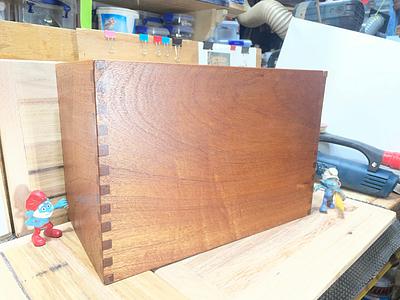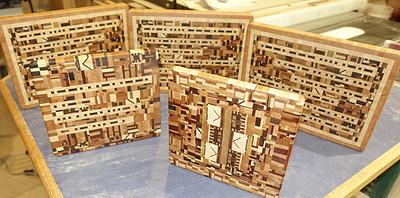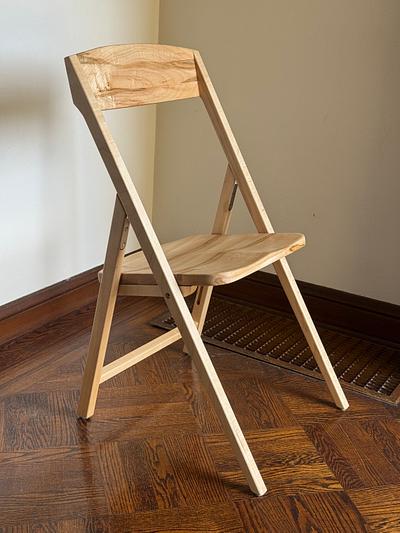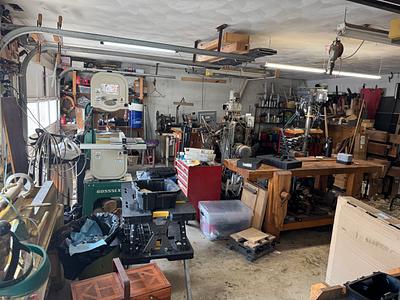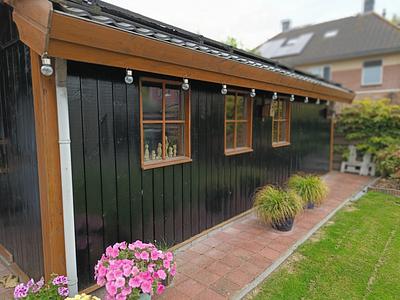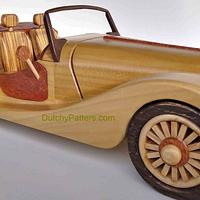Share your craft projects
Make new craft buddies
Ask craft questions
Blog your craft journey
The Basics of Woodworking Joints: Dovetail, Mortise and Tenon, and More!
Woodworking joints are one of the most important aspects of creating a quality piece. They keep everything in place and aligned, and they can be built in many different ways to suit your needs.
What is a woodworking joint? A woodworking joint is any type of joining technique that connects two or more pieces together at their ends, typically for the purpose of constructing furniture or other objects; it secures them in place and aligns them with each other. Woodworking joints can be created by using either nails (called “fasteners”) or glue, but fasteners are usually preferred because they allow you to move your project around much easier than glue would! There are several types of basic wood working joints: dovetail, mortise and tenon, tongue-and-groove, dowel, biscuit joints, edge gluing, glue blocks/halving joints & splines. Each type of joint varies in its appearance and use.
Basic types of joints and their uses
Dovetail joints - A dovetail joint is a type of joinery technique where two interlocking pieces, typically a male and female piece, are connected together. The female piece has a wedge-shaped indentation called the “tail”, while the male piece has a corresponding wedge-shaped protrusion called the “pin”. These interlocking pieces are designed to fit together, and the shape of the tail ensures a tight fit with its corresponding pin. This is a very strong type of joint because it is essentially a “living” joint.
Mortise and tenon joints - A mortise and tenon joint is considered to be an extremely strong type of woodworking joint. A mortise is a cavity cut into the edge, end or face of a piece to receive a tenon so they can be joined together. The tenon fits inside the mortise and is joined by glue, which you add when fitting the pieces together. Often times this joint type will need to have its ends prepared to fit together by using a mortiser.
Tongue-and-groove joints - A tongue and groove joint is often used in plywood or lumber panels where the pieces should go together tightly. The tongue, which is square cut along its length, mates with the square edge of the mating board. When assembling your project, you may need to use a mallet or the back of your blade to secure the pieces.
Dowel joints - A dowel joint is very similar to a mortise and tenon joint, except it uses thin rods of wood instead of large boards. The board usually has rounded corners that are used to fit into round holes that have been drilled into the mating board.
Edge gluing - This is a type of woodworking joint which uses no fasteners and is generally used on small pieces where you need to avoid splitting the piece. It's done by glueing a long edge of two or more boards together, usually with a clamp or clamps holding them tight while the glue dries.
Gluing blocks/halving joints - This type of woodworking joint is used for building boxes or panels where you don't want to use too many fasteners. Similar to edge gluing, the pieces are joined together by cutting half circles into each board and then attaching them with glue on either side. The cuts are made so the grain of the pieces is running in opposite directions, providing increased resistance to wear and tear.
Splines - A spline joint can be added to any type of joint that requires more reinforcement, similar to adding a biscuit joint. A spline joint often looks like an elongated dovetail shape (although you could make it in any shape), and it can be used to hold together plywood pieces which are not necessarily the same thickness.
How to make a dovetail joint
Step 1: Lay out your pieces
Before you can begin cutting your pieces, you need to decide how large to make the pins and tails. The simplest way to do this is by setting up a pencil line across both boards at once, marking where each will be located. To determine the width of the tail, use your pencil to draw a line from corner to corner on the inside face of the board. The tail will be centered over this line and protrude 1/8 inch (0.3 cm) past it.
Draw marks for your dovetail joints to guide you when cutting
Step 2: Cut the tails
Now you need to cut along that pencil line using a dovetail saw. If you don't have a dovetail saw you can also use a coping saw, just be aware that it will take longer due to the thicker blade.
Step 3: Cut away the excess
Now cut along the tails to remove the bulk of the material. This is called "ploughing" and can be done with your dovetail saw or a chisel.
Step 4: Cut the pins
Now cut the pins, which are simply end grain to end grain. Start by making your marks, then saw down to create either half-pins (tails on one board, pins on the other) or full-pins (tails and pins made from scratch). Chisels are typically used for this step.
Step 5: Create the dovetail joint
Now all that's left to do is clean up the joints. Pare away the excess wood and test the joint, making sure it fits tightly together.
If you want to get really fancy, you can add a contrasting wood into the pins to make them pop out more. This process takes time and practice so if you're new to woodworking, you may want to leave it for another day.
Common mistakes when making joints
When it comes to woodworking, there are always tips and tricks for getting the job done faster, easier, and with better results. Making joints is no exception! There are some common mistakes that beginning woodworkers often make when using their tools or techniques which usually ends up in wasted supplies. Here's a few to watch out for:
Using a dull saw - A dull saw will require more force, and as you push harder to cut through the material it may cause the blade to slide out of place and/or create a jagged cut which could ruin your project. Making sure your saw is sharpened before use should prevent this.
Cutting too deep - While cutting away excess wood manually should work, it can be time-consuming (and frustrating when your saw slips out of the groove). Using a flush trim saw will make this process faster, easier, and more controlled.
Trying to cut too much in one go - Wood is not an easy material to work with. You want it to fold over easily but you don't want to go too far and make it break or crack. Practice makes perfect, try breaking your material down into smaller pieces the first few times around before attempting to cut through an entire board.
Using the wrong blade - Different blades are made for different materials (and different uses within those materials). A good example is plywood; you don't want to use a thin blade meant for thin woods because it may crack the plywood.
Cutting wood at the wrong angle - This mistake is also related to blade sharpness; if you struggle to make a straight cut, check your blade and its angle of attack. If it isn't cutting through the material without resistance (meaning the wood wants to bend instead of splitting) chances are you're either using too much force or the blade is at the wrong angle.
All of these errors can be fixed by using a sharp saw and taking your time, allowing each cut to complete slowly before moving onto the next. By taking your time you will have more control over the pieces and how they fit together.
Tips for beginners on how to get started with woodworking joints
You may find that your first few joints don't fit together perfectly; this is okay and expected. Once you start practicing and getting a feel for the material you should see an improvement in your skills (and how well your projects turn out). If you're still struggling, follow these tips:
Have patience - Working with wood requires time to get used to your tools, get familiar with the material, and slowly improve your skills. Wood is not forgiving if you try to rush it so take things slow at first until everything starts coming together.
Don't overwork yourself - When using a new tool or woodworking method there's always a chance of making an error which could cause damage to your material. Because of this, don't try to work on two pieces at once or push yourself too hard because you want to finish all your projects right away. If something isn't fitting together like it should, put it aside and come back later until you're ready for another go.
Cleaning up the cuts - What good are skillful joints if they're jagged and splintered? Not much! A quick pass with a file or sandpaper can make your joints smooth like glass (or whatever you want them to be).
Practice, practice, practice - Like most things in life, the more you do something the easier it is for you to do. By practicing your joints you'll get a feel for how the material works and what it requires to make a good joint. Don't be afraid use scrap pieces of wood to experiment with different blade angles, saw types, or hand positions.
Different ways to use different types of woodworking joints in your projects
Here are some different ways you can use woodworking joints in your projects:
Connect pieces edge-to-edge - Making a box with butt joints is the easiest and simplest way to connect two pieces of wood together. Just line up the edges and firmly press down on them to secure them together!
Connect pieces corner-to-corner - If you want to connect your pieces in a shape other than a box you can use bridle joints. This is another fairly simple joint that requires two end cuts and additional connectors that go across the corners (making an X).
Connect pieces at 45-degree angles - Sometimes you'll want to put your material together but instead of connecting them edge-to-edge or corner-to-corner it's easier to connect them at a 45° angle. The easiest way to do this is with miter joints (and you can even use the saw blade as one of the connectors!).
Connect scrolled pieces - Not quite ready for something that complicated? Try your hand at mitering dovetail joints which give your material a scrolled look. Start by making a mitre cut at a 45° angle and then connect the pieces using dovetails (one of the most basic woodworking joints).
Connect pieces with curves - If you want to make something like an armoire or curio cabinet, mortise and tenon joints are the way to go. These joints allow you to connect your material at any angle and can even curve around the shape of an object.
Secure loose pieces together - Maybe you don't want a permanent joint and instead just want something temporary like for a party or event. Routed tongue and groove joints are perfect for this job because they won't come apart after a few days and can withstand a bit of wear and tear.
Secure loose pieces with glue - If you want your joint to be a little more permanent you can use dowel joints. Drill holes down the length of two matching pieces and then insert a dowel into each end. You may need some clamps or weights to hold the pieces together while the glue dries.
Secure non-loose pieces together - What if you want your woodworking joint to connect two pieces that don't need to be loose and can't take a lot of weight (like small table legs)? For this job we recommend using one of three different dovetails: double dovetail, single dovetail, or through dovetail.
A list of tools you might need if you plan on using some or all the joints mentioned above in your project(s).
If you plan on using any of the joints mentioned above in your project(s) follow this list to make sure you have everything you need before getting started!
- Mortise and tenon joints - chisel, router with bits (mortising bit), glue
- Dovetail joints - saw, clamps or weights, dowels
- Bridle joints - saw, clamps or weights
- Miter joints - miter saw (or a hand saw and chisel), clamps
- Through dovetail joints - handsaw, dowel jig, clamp
- Tongue and groove joints - router with bits (grooving bit), glue
- Routed tongue and groove joints - router with bits (routing bit), clamps or weights
- Routed butt/edge joints - router with bits (routing bit)
- Scrolled dovetail joints - handsaw, dowel jig, clamp
- Temporary joints - drill, dowels
- Loose pieces together temporarily - drill, dowels
- Loose pieces with glue - clamps
- Screw and nail joints - screwdriver, hammer
- Mechanical connections - hand drill, bolt cutters
When you've completed your project(s) don't forget to share it with others! You can also upload a picture into our gallery for others to see and admire your work.











